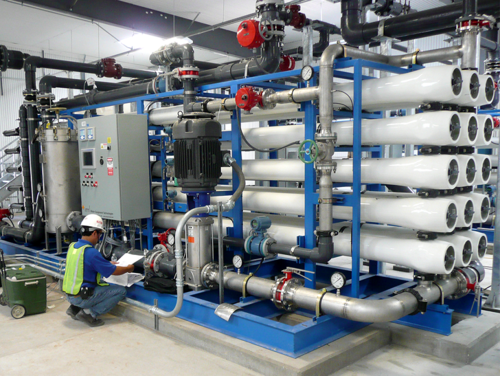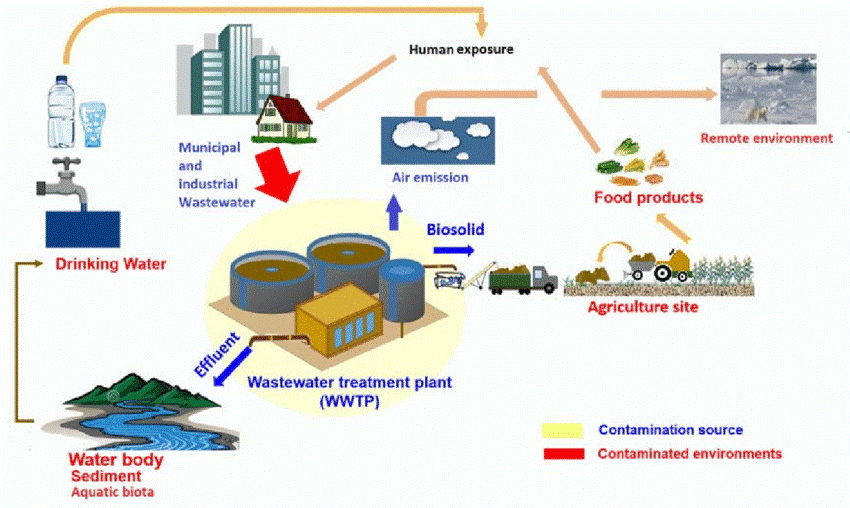PFAS Treatment in Groundwater
Your Guide to PFAS Treatment Technologies and Benefits
The occurrence of PFAS contamination in water resources requires an extensive understanding of offered treatment modern technologies. Each technology not just targets details PFAS compounds however additionally plays a crucial function in improving total water high quality and shielding environmental honesty.
Recognizing PFAS Contamination
Recognizing PFAS contamination is vital for resolving its prevalent effect on environmental and human health and wellness (m270 pfas treatment). Per- and polyfluoroalkyl materials (PFAS) are a team of artificial chemicals extensively made use of in numerous commercial and consumer products because of their water- and grease-resistant homes. Commonly located in firefighting foams, non-stick pots and pans, and water-repellent textiles, PFAS have entered the setting through production procedures, wastewater discharges, and leaching from land fills
Once launched, these substances continue the atmosphere, causing widespread contamination of dirt and water sources. Their special chemical structure, defined by solid carbon-fluorine bonds, provides them resistant to degradation, resulting in a phenomenon called "permanently chemicals." PFAS can accumulate in the human body and the food chain, possibly triggering negative health and wellness impacts, including immune system disruption, developmental issues, and an enhanced threat of particular cancers cells.
Regulatory firms and health and wellness organizations are significantly recognizing the value of PFAS contamination, prompting efforts to keep an eye on, analyze, and minimize its impacts. Understanding the paths of PFAS contamination is important for educating public law and creating efficient strategies to shield both environmental and human health.
Review of Therapy Technologies
Various treatment modern technologies have actually been established to attend to the challenges postured by PFAS contamination in water and soil. These modern technologies can be broadly categorized right into several classifications, each with its unique systems and performance in removing PFAS substances.
One popular technique is ion exchange, which makes use of material products to record and get rid of PFAS from infected water. Another innovation, progressed oxidation procedures (AOPs), employs strong oxidants and ultraviolet light to break down PFAS right into much less dangerous materials.

Turned On Carbon Filtration
Turned on carbon filtration is an extensively made use of technique for the removal of PFAS from polluted water, understood for its ability to adsorb a broad variety of organic compounds. This innovation employs turned on carbon, a highly porous product with a comprehensive surface, which assists in the binding of PFAS molecules through physical adsorption. The performance of turned on carbon in eliminating PFAS is influenced by a number of factors, consisting of the kind of carbon used, the get in touch with time, and the focus of PFAS in the water.
One of the benefits of turned on carbon filtration is its flexibility; it can be applied in various setups, such as granular activated carbon (GAC) systems or powdered turned on carbon (PAC) systems. GAC systems are generally used in larger-scale applications, while political action committee can be utilized in smaller sized or momentary configurations. The innovation is relatively easy to run and preserve, making it easily accessible for many water treatment centers.

Ion Exchange Solution
Ion exchange systems stand for one more efficient method for the elimination of PFAS from polluted water, complementing methods like turned on carbon purification. These systems operate the concept of exchanging ions in the water with ions hung on a resin material. Ion exchange materials can be particularly created to target the adversely billed PFAS substances, properly catching them and allowing cleaner water to go through.
Among the primary advantages of ion exchange systems is their capacity to remove a wide range of PFAS, including both long-chain and short-chain variants. This convenience makes them suitable for different applications, varying from community water treatment to commercial processes. Additionally, ion exchange systems can frequently accomplish reduced discovery restrictions for PFAS contrasted to a few other treatment approaches, thus enhancing water quality.
Nonetheless, it is important to check and manage the regrowth of ion exchange media, as the efficiency can decrease in time as a result of saturation. Appropriate upkeep and substitute of the material are visit this site right here important for sustaining the system's performance. In general, ion exchange systems provide a trustworthy and effective option for PFAS elimination, contributing substantially to safe alcohol consumption water criteria and environmental management.
Advanced Oxidation Processes
Advanced Oxidation Processes (AOPs) utilize effective oxidants to effectively break down PFAS compounds in infected water. These innovative therapy methods generate extremely reactive varieties, such as hydroxyl radicals, that can damage down complex PFAS particles right into less harmful results. m270 pfas treatment. AOPs usually employ mixes of ultraviolet (UV) light, ozone, hydrogen peroxide, or Fenton's reagent, improving the oxidation potential and improving deterioration performance
The primary advantage of AOPs hinges on their ability to target a broad series of PFAS substances, including both long-chain and short-chain variants. This convenience is vital, as PFAS contamination usually includes mixtures of various substances with differing chemical structures. In addition, AOPs can be incorporated into existing water therapy systems, making them a functional option for several towns visit the site and sectors.
Nonetheless, the application of AOPs can be resource-intensive, calling for mindful factor to consider of operational prices and power intake. Additionally, while AOPs are effective in breaking down PFAS, they might not entirely get rid of all byproducts, necessitating additional therapy steps - m270 pfas treatment. On the whole, AOPs stand for an encouraging method for resolving PFAS contamination, contributing to cleaner water resources and improved public wellness security

Verdict
By picking the ideal technology, communities can enhance water top quality, safeguard public health, and reduce the environmental threats linked with PFAS direct exposure. Proceeded research and application of these approaches are important for reliable management of PFAS contamination in impacted locations.